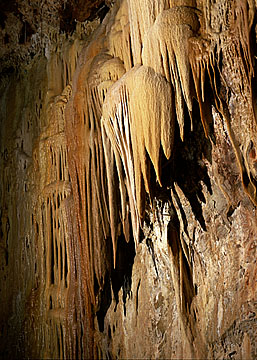During the last two weeks, exploration of surrounding areas has been curtailed, what with a dropped drive shaft on the Jeep and some rainy, windy days. The Jeep reconstruction necessitated a search for parts which took time to receive by mail, pick up at a junkyard, and complete the repairs. We’re back in business, but the rain is keeping us in. Not to worry. There are plenty of things to do indoors. The clubhouse here offers Zumba, a weight class, and line dancing. I’ve taken advantage of all three, and in between rain squalls, have been able to walk several miles each day. There’s also a Bible study one night a week which has driven me to study the basis for my own beliefs since the ideas being promulgated don’t square with my idea of truth. In my study, I’ve gained a new appreciation for the Sanctuary and the way God’s plan of salvation is woven with a silver thread throughout the entire Bible.
Thirty miles from Benson is the town of Sierra Vista, a pleasant burgh of 43,000, which came into being when two companies of the 6th United States Calvary established a camp at the mouth of Huachuca Canyon to protect settlers in the area and to stop Apache raiding parties from escaping into Mexico. This place is loaded with history. We’ve enjoyed a couple of movies there in a warm and dry theater during this rainy time, the latest being “Dark Waters,” the story of an attorney who went after the DuPont company when he realized that their knowing pollution of the Ohio River with the chemical PFOA was causing major health problems for not only the cattle, but also for humans. This chemical is used in the production of Teflon pans and, while Scientific American says they’re safe, I tend to err on the side of caution and never use Teflon. It’s a great story of sacrifice for a cause.
Kartchner Caverns is just a few miles down the road from where we’re staying. While it didn’t open to the public until 1999, it was discovered back in 1974 by Gary Tenen and Randy Tuft, two young men who kept it secret for 14 years, concerned it would be damaged should the public find out. In 1978, they told the property owners and Mr. Kartchner, a science teacher, was thrilled. Then began the lengthy process of finding an agency that would take on the cave, a difficult task when you’re trying to be secretive and still convince the agency of its worth. In 1988, a bill was passed by the Arizona State Legislature making Kartchner Caverns State Park a reality.
On our tour, we saw two football-field-sized rooms, the Rotunda and Throne Rooms, in the upper caverns. Forty-five years after its original discovery, we could still see Tenen and Tuft’s footprints showing how careful they were to preserve the cave. Colorful mineral formations as small as a soda straw, some in the color and configuration of bacon, curtains, and cottage cheese filled the caverns. The tour concluded in the Throne Room with a light and music display, showcasing an impressive formation called Kubla Khan that reaches 58 feet from floor to ceiling.
Our tour guide told me that Gary Tenen visits nearly every month, joining a tour and sharing stories for the lucky group that has him on their tour and who get to hear about the original discovery.
The Big Room, which we didn’t see on this tour, belongs to the bats in the summer, when around 1,500 of these mammals take over the room, giving birth, raising their pups and teaching them to fly, echolocate and hunt.
I’ll tell you more about the Big Room after our next tour.










